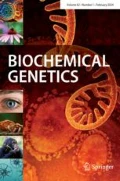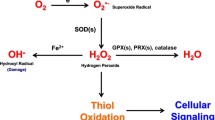Abstract
We examined whether steady-state mRNA levels of five tumor suppressor genes are subjected to oxidative stress. Superoxide radical-generating menadione and serum deprivation diminished the steady-state mRNA levels for the genes phosphatase and tensin homolog (PTEN), ubiquitin specific peptidase 28 (USP28), damage-regulated autophagy modulator (DRAM), TP53-induced glycolysis and apoptosis regulator (TIGAR), and cylindromatosis (CYLD). Hydrogen peroxide showed suppression in steady-state mRNA levels for USP28, DRAM, TIGAR, and CYLD but not for PTEN. The steady-state mRNA levels specific for all five genes were enhanced by antioxidants, such as glutathione and N-acetylcysteine. The HepG2 stable transfectants overexpressing the mitochondrial isoform of human glutaredoxin, Grx2a, and containing a relatively low reactive oxygen species (ROS) level were assessed to contain the increased steady-state mRNA levels specific for the five tumor suppressor genes. In brief, the steady-state mRNA levels specific for these genes are negatively regulated by oxidative stress through the mediation of ROS.






Similar content being viewed by others
References
Acharya A, Das I, Chandhok D, Saha T (2010) Redox regulation in cancer: a double-edged sword with therapeutic potential. Oxid Med Cell Longev 3:23–34
Baek SJ, Kim JS, Moore SM, Lee SH, Martinez J, Eling TE (2005) Cyclooxygenase inhibitors induce the expression of the tumor suppressor gene EGR-1, which results in the up-regulation of NAG-1, an antitumorigenic protein. Mol Pharmacol 67:356–364
Bell EL, Emerling BM, Ricoult SJ, Guarente L (2011) SirT3 suppresses hypoxia inducible factor 1α and tumor growth by inhibiting mitochondrial ROS production. Oncogene 30:2986–2996
Bensaad K, Tsuruta A, Selak MA, Vidal MN, Nakano K, Bartrons R, Gottlieb E, Vousden KH (2006) TIGAR, a p53-inducible regulator of glycolysis and apoptosis. Cell 126:107–120
Bensaad K, Cheung EC, Vousden KH (2009) Modulation of intracellular ROS levels by TIGAR controls autophagy. EMBO J 28:3015–3026
Bertram C, Hass R (2008) Cellular responses to reactive oxygen species-induced DNA damage and aging. Biol Chem 389:211–220
Bignell GR, Warren W, Seal S, Takahashi M, Rapley E, Barfoot R, Green H, Brown C, Biggs PJ, Lakhani SR, Jones C, Hansen J, Blair E, Hofmann B, Siebert R, Turner G, Evans DG, Schrander-Stumpel C, Beemer FA, van Den Ouweland A, Halley D, Delpech B, Cleveland MG, Leigh I, Leisti J, Rasmussen S (2000) Identification of the familial cylindromatosis tumour-suppressor gene. Nat Genet 25:160–165
Chen H, Toyooka S, Gazdar AF, Hsieh JT (2003) Epigenetic regulation of a novel tumor suppressor gene (hDAB2IP) in prostate cancer cell lines. J Biol Chem 278:3121–3130
Circu ML, Aw TY (2008) Glutathione and apoptosis. Free Radic Res 42:689–706
Crighton D, Wilkinson S, O’Prey J, Syed N, Smith P, Harrison PR, Gasco M, Garrone O, Crook T, Ryan KM (2006) DRAM, a p53-induced modulator of autophagy, is critical for apoptosis. Cell 126:121–134
Danial NN, Korsmeyer SJ (2004) Cell death: critical control points. Cell 116:205–219
De La Rosa-Velázquez IA, Rincón-Arano H, Benítez-Bribiesca L, Recillas-Targa F (2007) Epigenetic regulation of the human retinoblastoma tumor suppressor gene promoter by CTCF. Cancer Res 67:2577–2585
Fu YQ, Fang F, Lu ZY, Kuang FW, Xu F (2010) N-acetylcysteine protects alveolar epithelial cells from hydrogen peroxide-induced apoptosis through scavenging reactive oxygen species and suppressing c-Jun N-terminal kinase. Exp Lung Res 36:352–361
Giono LE, Manfredi JJ (2006) The p53 tumor suppressor participates in multiple cell cycle checkpoints. J Cell Physiol 209:13–20
Gladyshev VN, Liu A, Novoselov SV, Krysan K, Sun QA, Kryukov VM, Kryukov GV, Lou MF (2001) Identification and characterization of a new mammalian glutaredoxin (thioltransferase), Grx2. J Biol Chem 276:30374–30380
Greenberg RA (2008) Recognition of DNA double strand breaks by the BRCA1 tumor suppressor network. Chromosoma 117:305–317
Hashemy SI, Johansson C, Berndt C, Lillig CH, Holmgren A (2007) Oxidation and S-nitrosylation of cysteines in human cytosolic and mitochondrial glutaredoxins: effects on structure and activity. J Biol Chem 282:14428–14436
Holmgren A, Johansson C, Berndt C, Lönn ME, Hudemann C, Lillig CH (2005) Thiol redox control via thioredoxin and glutaredoxin systems. Biochem Soc Trans 33(Pt 6):1375–1377
Hu C, Jiang L, Geng C, Zhang X, Cao J, Zhong L (2008) Possible involvement of oxidative stress in trichloroethylene-induced genotoxicity in human HepG2 cells. Mutat Res 652:88–94
Jeffers JR, Parganas E, Lee Y, Yang C, Wang J, Brennan J, MacLean KH, Han J, Chittenden T, Ihle JN, McKinnon PJ, Cleveland JL, Zambetti GP (2003) Puma is an essential mediator of p53-dependent and -independent apoptotic pathways. Cancer Cell 4:321–328
Jenkins NC, Liu T, Cassidy P, Leachman SA, Boucher KM, Goodson AG, Samadashwily G, Grossman D (2011) The p16(INK4A) tumor suppressor regulates cellular oxidative stress. Oncogene 30:265–274
Jung HI, Lim HW, Kim BC, Park EH, Lim CJ (2004) Differential thioredoxin reductase activity from human normal hepatic and hepatoma cell lines. Yonsei Med J 45:263–272
Kim SJ, Jung HJ, Choi HJ, Lim CJ (2012) Glutaredoxin 2a, a mitochondrial isoform, plays a protective role in a human cell line under serum deprivation. Mol Biol Rep 39:3755–3765
Lee JJ, Kim BC, Park MJ, Lee YS, Kim YN, Lee BL, Lee JS (2011) PTEN status switches cell fate between premature senescence and apoptosis in glioma exposed to ionizing radiation. Cell Death Differ 18:666–677
Lönn ME, Hudemann C, Berndt C, Cherkasov V, Capani F, Holmgren A, Lillig CH (2008) Expression pattern of human glutaredoxin 2 isoforms: identification and characterization of two testis/cancer cell-specific isoforms. Antioxid Redox Sign 10:547–557
Lundberg M, Johansson C, Chandra J, Enoksson M, Jacobsson G, Ljung J, Johansson M, Holmgren A (2001) Cloning and expression of a novel human glutaredoxin (Grx2) with mitochondrial and nuclear isoforms. J Biol Chem 276:26269–26275
Massoumi R, Chmielarska K, Hennecke K, Pfeifer A, Fässler R (2006) Cyld inhibits tumor cell proliferation by blocking Bcl-3-dependent NF-kappaB signaling. Cell 125:665–677
Matés JM, Segura JA, Alonso FJ, Márquez J (2008) Intracellular redox status and oxidative stress: implications for cell proliferation, apoptosis, and carcinogenesis. Arch Toxicol 82:273–299
Nawata S, Shi HY, Sugino N, Zhang M (2011) Evidence of post-translational modification of the tumor suppressor maspin under oxidative stress. Int J Mol Med 27:249–254
Pear WS, Nolan GP, Scott ML, Baltimore D (1993) Production of high-titer helper-free retroviruses by transient transfection. Proc Natl Acad Sci USA 90:8392–8396
Popov N, Wanzel M, Madiredjo M, Zhang D, Beijersbergen R, Bernards R, Moll R, Elledge SJ, Eilers M (2007) The ubiquitin-specific protease USP28 is required for MYC stability. Nat Cell Biol 9:765–774
Saha T, Rih JK, Rosen EM (2009) BRCA1 down-regulates cellular levels of reactive oxygen species. FEBS Lett 583:1535–1543
Salmena L, Carracedo A, Pandolfi PP (2008) Tenets of PTEN tumor suppression. Cell 133:403–414
Sasabe E, Yang Z, Ohno S, Yamamoto T (2010) Reactive oxygen species produced by the knockdown of manganese-superoxide dismutase up-regulate hypoxia-inducible factor-1alpha expression in oral squamous cell carcinoma cells. Free Radic Biol Med 48:1321–1329
Sherr CJ (2004) Principles of tumor suppression. Cell 116:235–246
Smith LT, Lin M, Brena RM, Lang JC, Schuller DE, Otterson GA, Morrison CD, Smiraglia DJ, Plass C (2006) Epigenetic regulation of the tumor suppressor gene TCF21 on 6q23-q24 in lung and head and neck cancer. Proc Natl Acad Sci USA 103:982–987
Takehara T, Liu X, Fujimoto J, Friedman SL, Takahashi H (2001) Expression and role of Bcl-xL in human hepatocellular carcinomas. Hepatology 34:55–61
Trompouki E, Hatzivassiliou E, Tsichritzis T, Farmer H, Ashworth A, Mosialos G (2003) CYLD is a deubiquitinating enzyme that negatively regulates NF-kB activation by TNFR family members. Nature 424:793–796
Villunger A, Michalak EM, Coultas L, Mullauer F, Bock G, Ausserlechner MJ, Adams JM, Strasser A (2003) p53- and drug-induced apoptotic responses mediated by BH3-only proteins puma and noxa. Science 302:1036–1038
Wang YM, Peng SQ, Zhou Q, Wang MW, Yan CH, Yang HY, Wang GQ (2006) Depletion of intracellular glutathione mediates butenolide-induced cytotoxicity in HepG2 cells. Toxicol Lett 164:231–238
Wingert RA, Galloway JL, Barut B, Foott H, Fraenkel P, Axe JL, Weber GJ, Dooley K, Davidson AJ, Schmid B, Paw BH, Shaw GC, Kingsley P, Palis J, Schubert H, Chen O, Kaplan J, Zon LI (2005) Deficiency of glutaredoxin 5 reveals Fe–S clusters are required for vertebrate haem synthesis. Nature 436:1035–1039
Xing KY, Lou MF (2002) Effect of H2O2 on human lens epithelial cells and the possible mechanism for oxidative repair by thioltransferase. Exp Eye Res 74:113–122
Yang G, Zhong L, Jiang L, Geng C, Cao J, Sun X, Ma Y (2010) Genotoxic effect of 6-gingerol on human hepatoma G2 cells. Chem Biol Interact 185:12–17
Zhang D, Zaugg K, Mak TW, Elledge SJ (2006) A role for the deubiquitinating enzyme USP28 in control of the DNA-damage response. Cell 126:529–542
Zhuge J, Cederbaum AI (2006) Serum deprivation-induced HepG2 cell death is potentiated by CYP2E1. Free Radic Biol Med 40:63–74
Acknowledgments
This research was supported by the Basic Science Research Program through the National Research Foundation of Korea (NRF) funded by the Ministry of Science, ICT & Future Planning (2013-022019). This study is supported in part by Kangwon National University.
Author information
Authors and Affiliations
Corresponding author
Additional information
S.-J. Kim and H.-J. Jung contributed equally to this work.
Rights and permissions
About this article
Cite this article
Kim, SJ., Jung, HJ. & Lim, CJ. Reactive Oxygen Species-Dependent Down-Regulation of Tumor Suppressor Genes PTEN, USP28, DRAM, TIGAR, and CYLD Under Oxidative Stress. Biochem Genet 51, 901–915 (2013). https://doi.org/10.1007/s10528-013-9616-7
Received:
Accepted:
Published:
Issue Date:
DOI: https://doi.org/10.1007/s10528-013-9616-7




